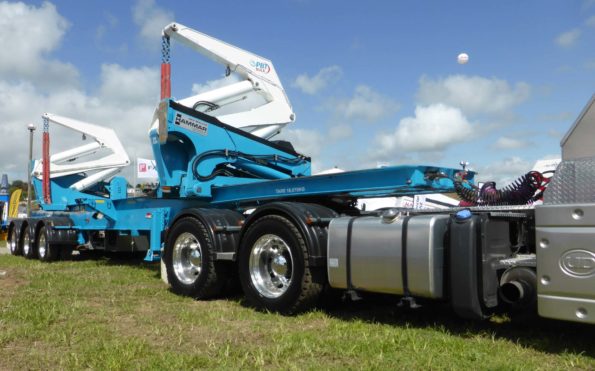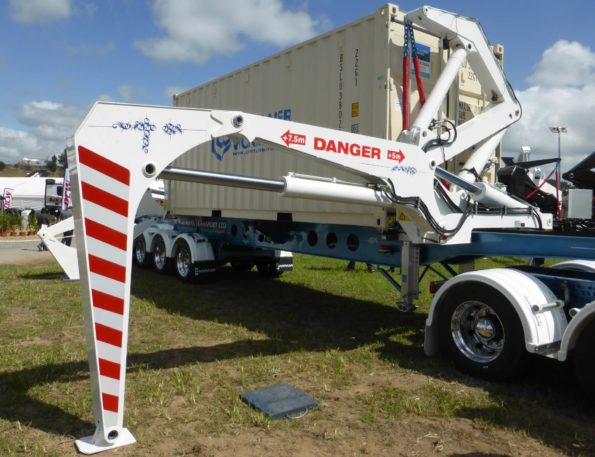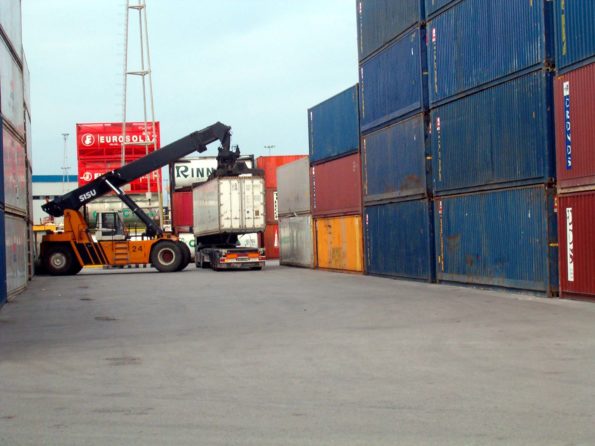A side loader is a self-loading trailer, typically skeletal, with two hydraulic lifting cranes to lift a container onto it. It can be operated by the driver using controls on the side of the trailer or a remote control. Sideloaders are sometimes called Swing Lifters; this is a brand name of a particular manufacturer, though.

How does the side loader load the container onto the trailer?
The driver positions the trailer next to the container. The power to the side loader is provided by the PTO or power take off.
The cranes extend and place outriggers either side of the container to prevent the trailer from tipping. Once the outriggers are fully extended, the driver is ready to connect the chains.

The chains are connected to the bottom corners of the container using the fixings. Once the lifting starts, it’s important that the driver stays well clear of the lifting zone.
As containers come in different lengths and weights, the cranes can slide along the trailer chassis to move to the best location for lifting, and so that they place the container in the optimum position for the best weight distribution.
Two short containers can be lifted together, end-to-end, with the right fittings.
Side loaders are useful when there are narrow aisles between container stacks or where there’s not much room in front of or behind the container.
Using a side loader, a driver can load or unload a container in less than five minutes, meaning they don’t have to wait for a crane, forklift or straddle carrier. This also means that only one person is involved in the lift, leading to improved safety factors.
Some models can also load a container onto another adjacent truck or rail wagon, or can stack one container on top of another that is at ground level.
Depending on the model, side loaders can also lift other types of loads that can be correctly slung using the chains, such as prefabricated concrete, swap bodies, vehicles, tanks, pipes, cable drums and heavy machinery. Some applications might require additional attachments such as a spreader bar.
As the weight of the load is taken through the truck’s wheels, side loaders are versatile in situations that other machinery might struggle in.
Advantages of side loaders
A business doesn’t have to have expensive lifting equipment such as cranes to load and unload the container.

One operator can load and unload, meaning lower staffing costs and less waiting.
The container can be left where it’s convenient for the customer to pack or unpack it; this may eliminate the need to forklifts and pallet jacks in some cases
The turnaround time for loading and unloading is very quick, increasing the potential number of deliveries that can be made in a day
Shipping containers are a cheap form of storage and can be used when warehouse space is at a premium. A side loader allows for moving these around at will.
Side loader maintenance is relatively straightforward.
Side loaders are good for handling sensitive or fragile loads.
Side loaders can also be installed on trucks, not just trailers.
